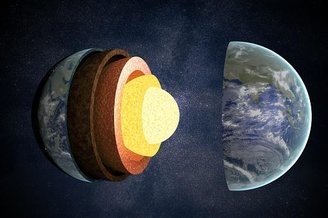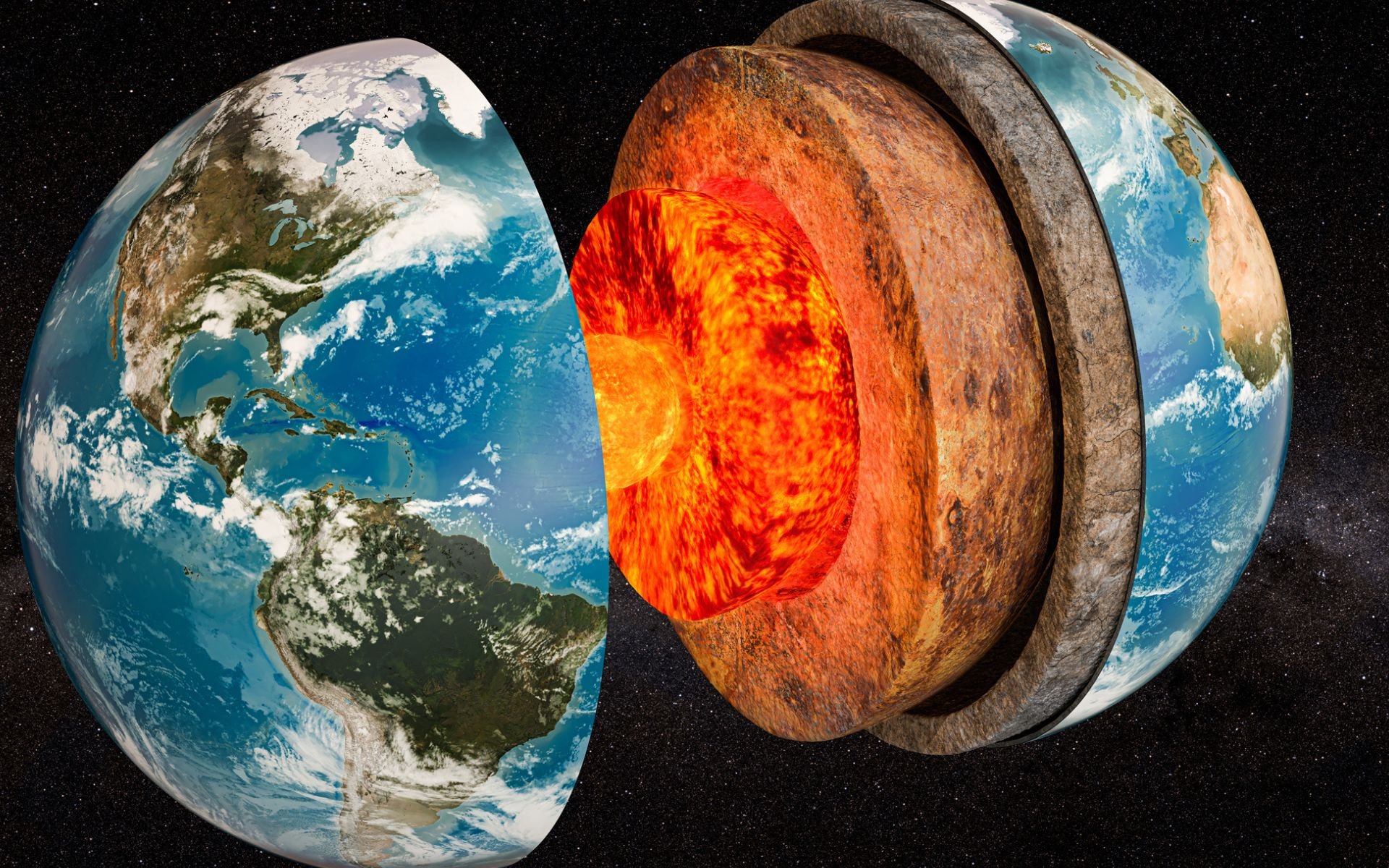The Earth consists of layers of mystery, each containing clues about the origin and structure of our planet. From towering mountains to deep oceans, it’s not just the surface that fascinates us; real mysteries are under our feet. Despite the cosmic magic of space and the search for extraterrestrial locations, the mysteries of Earth remain mostly unknown.
A. The formation of the Earth began 4.5 billion years ago The groundwork for birth is being prepared by a rotating nebula. The solar wind played a crucial role, stripping away light elements and leaving behind the building blocks of planets. The Earth was initially a mixture of molten elements that eventually cooled to form different layers; This is a phenomenon that still attracts the attention of scientists.
Earth’s Crust: surface layer
The Earth’s crust is the outermost layer of the planet, the surface on which we live. The crust, composed predominantly of silicate and basaltic rocks, is divided into two categories: Oceanic crust, which is thinner and denser, and continental crust, which is thicker and less dense.
This layer, whose thickness varies between 5 and 70 kilometers, is where important geological events such as earthquakes and volcanic activity occur.
Earth’s Mantle: Middle layer
Cloak is the middle layer of the planet and accounts for approximately 84% of the Earth’s total volume. It extends from the base of the crust to a depth of approximately 2,900 kilometers.

The mantle consists mainly of iron and magnesium silicates and is in a plastic physical state that allows the movement of tectonic plates. This dynamic is responsible Due to many geological processes we observe at the surface, such as mountain formation and continental drift.
It also reveals its secrets through xenoliths and diamonds. Xenoliths, pieces of the mantle covered with igneous rocks, offer a glimpse into this mysterious layer. Diamonds formed under extreme conditions deep within the mantle are evidence of its extraordinary nature.
Earth Core: the heart of the planet
The Earth’s core, located at the center of the planet, is divided into two parts: outer core and inner core. The outer core, composed mainly of liquid iron and nickel, is responsible for generating the Earth’s magnetic field.
The inner core, which is solid and also rich in iron and nickel, reaches temperatures of over 5,000 degrees Celsius, similar to the surface of the Sun.

Tectonic Movements: Shaping the Earth’s surface
The interaction between the lithosphere and asthenosphere, which are important components of the Earth’s structure, drives plate tectonics. This dynamic process is responsible for: It creates mountains, causes earthquakes, and shapes geography as we know it.
Understanding the Earth’s layers is crucial for geology, seismology studies and prediction of natural events. Additionally, knowledge of these layers helps in the exploration of natural resources. in understanding climate and environmental change, such as minerals and oil.
The three main layers of Planet Earth (crust, mantle, and core) are essential to understanding the dynamics and structure of our planet. Studying them not only gives us information about the Earth, but also gives us insight into other celestial bodies in the universe.
Did you like the content? So, stay up to date with more studies and curiosities about our planet at TecMundo and seize the opportunity to discover whether the Earth’s magnetic field can be reversed.
Source: Tec Mundo
I’m Blaine Morgan, an experienced journalist and writer with over 8 years of experience in the tech industry. My expertise lies in writing about technology news and trends, covering everything from cutting-edge gadgets to emerging software developments. I’ve written for several leading publications including Gadget Onus where I am an author.













